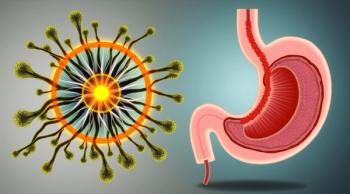
Study Shows Increasing Nursing Staff Improves Care
A study in the January/February 2006 issue of the journal Health Affairs concludes that increasing the number of registered nurses and hours of nursing care per patient would save 6,700 lives and 4 million days of patient care in hospitals each year. The research by UCLAs Jack Needleman, PhD, and Vanderbilt University School of Nursings Peter Buerhaus, PhD, RN, also finds that for hospitals that use both RNs and licensed practical nurses (LPNs), greater use of RNs appears to pay for itself in fewer patient deaths, reduced lengths of hospital stay, and decreased rates of hospital-linked complications such as urinary arrest and upper gastrointestinal bleeding.
All hospitals are feeling pressure to improve quality and contain costs. For hospitals where nurse staffing is low, this study makes an unequivocal business case for using more RNs in nurse staffing and a strong case based on value to patients for increasing the hours of nursing care, says Needleman, an associate professor at the School of Public Health of the University of California, Los Angeles (UCLA).
Were entering the ninth consecutive year of a national nursing shortage, says Buerhaus, professor and senior associate dean for research at VUSN. We hope this study stimulates a fresh debate on the contributions of nurses in improving the quality of hospital care.
In 2002, U.S. general hospitals employed 942,000 full time RNs and 120,000 full-time licensed practical nurses. The study simulated the effect of several options that would increase nurse staffing to a feasible level for most hospitals. Key findings include:
* Greater use of RNs translates into fewer patient deaths, reduced hospital stays and decreased rate of hospital-linked complications.
* Increasing the number of hours of nursing care provided by both RNs and LPNs would result in fewer deaths, avoidable complications and days of care.
* Expanding both the proportion of RNs and number of hours provided by licensed practical nurses to reach the top quarter of hospitals (a combination of the other two options) saves the most lives and greatest number of patient days.
Needleman and Buerhaus conclude that increasing the proportion of RNs would require hospitals below the 75th benchmark to replace more than 37,000 LPNs with RNs, at a cost of $811 million. However, this option also held the most benefits to hospitals and patients alike.
From a hospitals perspective, increasing nurse staffing is costly. Nevertheless, greater use of RNs in preference to LPNs appears to pay for itself, the authors say.
The cost of changing the RN/LPN mix without changing licensed hours is low relative to other options and the authors estimate such a move would save $242 million over the short-term and $1.8 billion over time. Increasing nurses in hospitals with licensed hours below that in the top quarter of hospitals would require 114,456 more RNs and more than 13,000 LPNs at a cost of $7.5 billion, and would end up saving $5.8 billion. Increasing hours and raising the proportion of nurses who are RNs would require 158,000 more RNs, cost $8.5 billion and result in a $5.7 billion savings according to the study.
These costs are not that high and for the benefits obtained, warrant serious consideration by policy makers, quality assurance agencies, and others concerned with the quality of care, the authors add.
The study was supported by a grant from the Commonwealth Fund, a New York-based health foundation that focuses on improving quality and access to care.
Source: Vanderbilt University
Newsletter
Stay prepared and protected with Infection Control Today's newsletter, delivering essential updates, best practices, and expert insights for infection preventionists.




